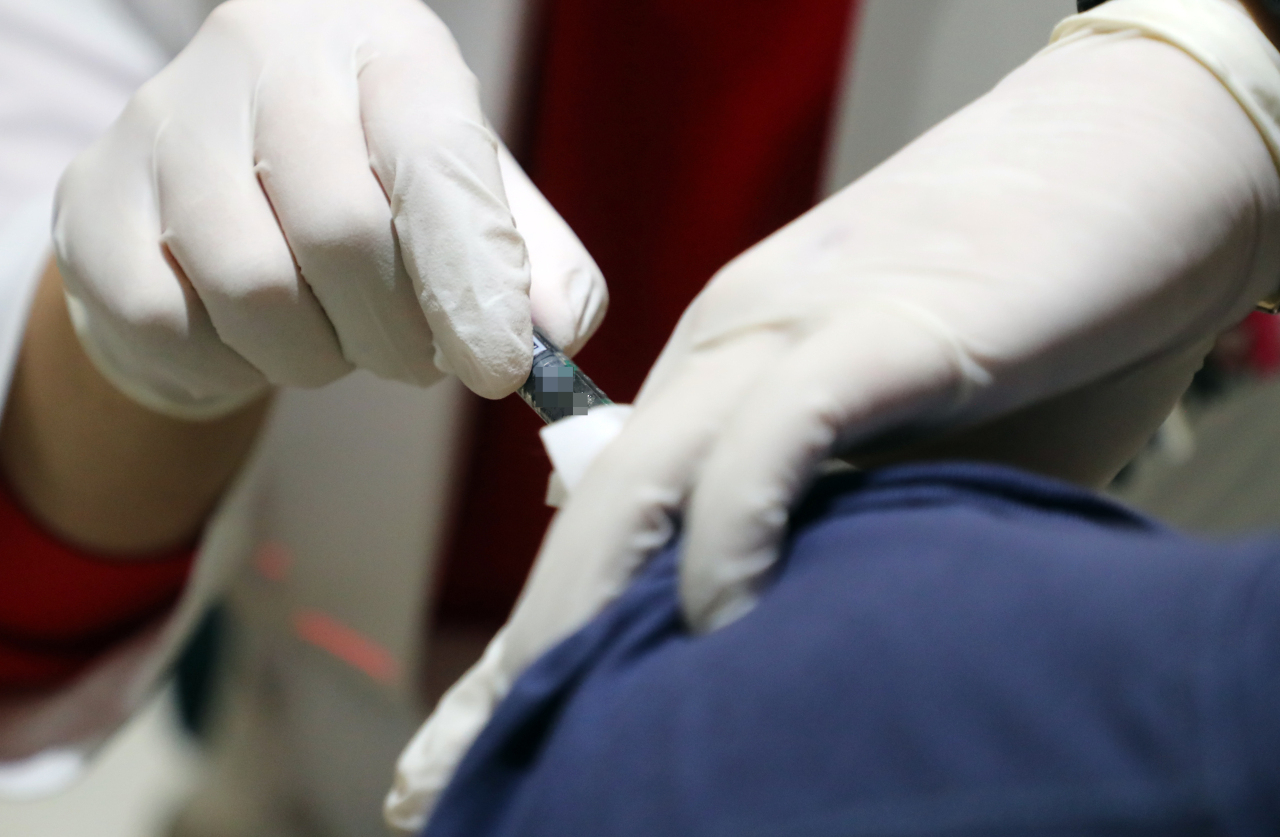 |
A man receives a flu vaccination shot (Herald DB) |
The number of suspected influenza cases in South Korea has surged to a five-year high, but the immunization rate has remained relatively unchanged.
The rate of patients showing symptoms suggestive of influenza per 1,000 outpatients for the second week of December stood at 61.3 – the highest figure since 2019, according to the Korea Disease Control and Prevention Agency.
The immunization rate as of Dec. 15, however, stood at 76.2 percent, slightly above 76.1 percent last year.
“Despite the surge in the number of flu patients, the immunization rate appears to be lower than what it should be this year,” said a physician surnamed Kim who operates a hospital in Seoul.
Professor Eom Joong-sik at Gachon University Gil Hospital in Incheon said, “A large-scale epidemic of an influenza virus can be stopped if at least 80 percent of the population gets vaccinated.”
“The recent mass infections of seasonal influenza came as general immunity against the flu has weakened over the COVID-19 pandemic, as well as immunization rate among children has dropped recently,” Eom added.
According to the KDCA data, the immunization rate was lower among childrencompared to the figure for adults. The proportion of children who received flu vaccines this year stood at 67.5 percent, 0.8 percentage point lower than the previous year.
The younger age groups have been more likely to have suspected flu with 120.1 per 1,000 outpatients aged 7-12 and 133.4 per 1,000 outpatients aged 13 to 18, the KDCA data showed.
A KDCA official noted that influenza cases among children aged between 7-12 increased by around 20.5 times, compared to last year, and the vaccination rate for the age group was relatively lower perhaps as they are not eligible for free vaccine programs.
The influenza vaccination rate among children has decreased over the past years, according to the country’s health agency. The KDCA said the flu vaccination rate for children here reached 74.5 percent in 2018. But the figure went down to 71 percent in 2022 and to below 70 percent this year.
Some have attributed the lower immunization rate to vaccine hesitancy.
“After the COVID-19 pandemic, I have become less confident in vaccines in general,” said Cho, a 32-year-old woman who lives in Seoul.
One mother of an 8-year-old boy said her son got the seasonal flu vaccine several years ago but only to get a high fever right after.
“Since then, I became increasingly reluctant to have my child and myself get flu vaccines,” said the woman surnamed Park.
Kim, the doctor at the Seoul hospital, said visitors showed reluctance to get both COVID-19 and flu vaccines in the same visit.
"Only a few patients had no issue getting both vaccines, while many have refused to get both vaccines,” Kim said.
The KDCA, however, strongly recommended flu vaccination. "Despite several side effects of flu vaccines, they are safe. The vaccines are also considered to be 70-90 percent effective in preventing the illness," an official from the KDCA said.




![[Weekender] Korea's traditional sauce culture gains global recognition](http://res.heraldm.com/phpwas/restmb_idxmake.php?idx=644&simg=/content/image/2024/11/21/20241121050153_0.jpg)


